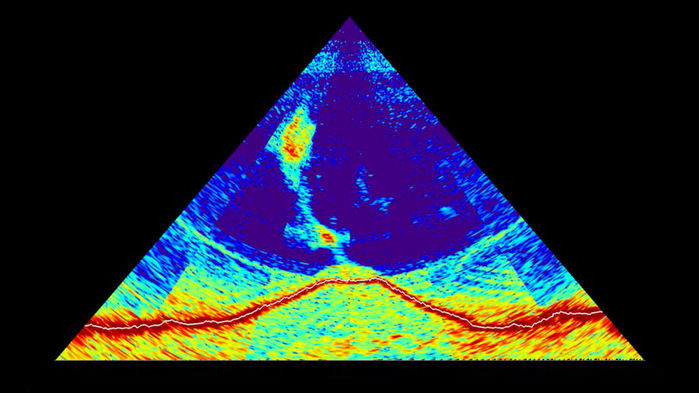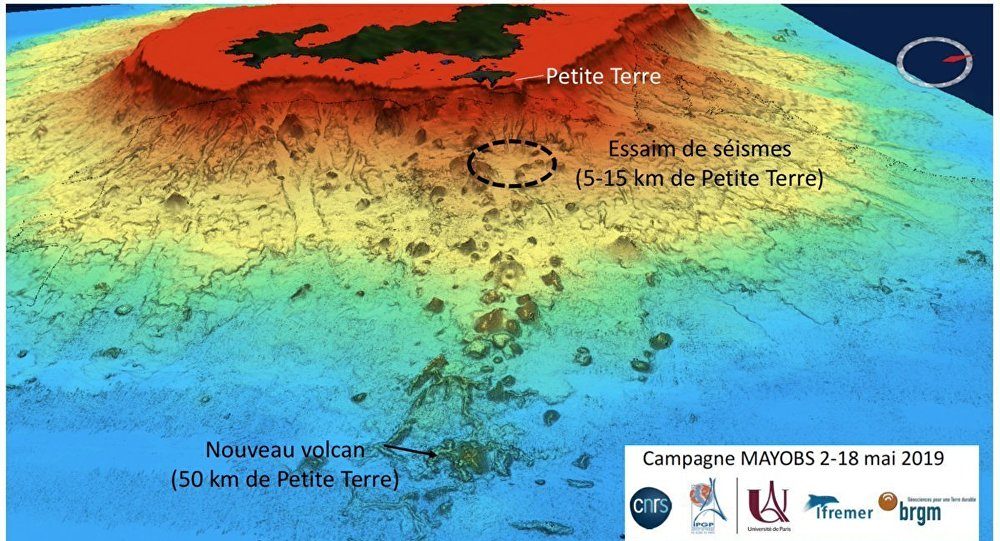
His team, along with scientists from the French national research agency CNRS and other institutes, had witnessed the birth of a mysterious submarine volcano, the largest such underwater event ever witnessed. "We have never seen anything like this," says IPGP's Nathalie Feuillet, leader of an expedition to the site by the research vessel Marion Dufresne, which released its initial results last week.
The quarter-million people living on the French island of Mayotte in the Comoros archipelago knew for months that something was happening. From the middle of last year they felt small earthquakes almost daily, says Laure Fallou, a sociologist with the European-Mediterranean Seismological Centre in Bruyères-le-Châtel, France. People "needed information," she says. "They were getting very stressed, and were losing sleep."
The authorities knew little more. Mayotte has a seismometer, but triangulating the source of the rumblings would require several instruments, and the nearest others are several hundred kilometers away in Madagascar and Kenya. A serious scientific campaign started only in February, when Feuillet and her team placed six seismometers on the ocean bottom 3.5 kilometers down, close to the activity.
Data from the seismometers, retrieved by the expedition this month, show a tightly clustered region of earthquake activity, ranging from 20 to 50 kilometers deep in Earth's crust. The team suspects a deep magma chamber fed molten rock to the sea floor and then contracted, driving the cracking and creaking of surrounding crust. GPS measurements on Mayotte also suggest a shrinking magma chamber: They show the island has sunk by 13 centimeters and moved 10 centimeters east in the past year.
The map of the sea floor, made by the ship's multibeam sonar, indicates that as much as 5 cubic kilometers of magma erupted onto the sea floor. The sonar also detected plumes of bubble-rich water rising from the center and flanks of the volcano. Feuillet says her team didn't see the shoals of dead fish that fisherman reported, but they did collect water samples from the plumes. The chemistry of the water will give clues about the composition of the magma, the depth from which it came, and the risk of an explosive eruption.
The crew also dredged up rocks from the flanks of the newborn volcano. "They were popping as we brought them on board," Feuillet says-a sign of high-pressure gas trapped inside the black volcanic material.
Explaining the eruption isn't easy. Most submarine volcanoes are found along midocean ridges, where tectonic plates in Earth's crust slowly spread apart, allowing magma from relatively shallow magma chambers to ooze up in rifts. Others mark deep mantle plumes that periodically burst through the crust, forming a chain of volcanoes, as plate tectonic forces drag it over the hot spot. The islands of Hawaii, the Galápagos, and nearby Réunion-on the opposite side of Madagascar from Mayotte-are all thought to have formed this way.
The Comoros are clearly volcanic. Mount Karthala on Grande Comore, at the west end of the chain, erupted as recently as 2007. Petite Terre, the volcano nearest to Mayotte, last erupted 7000 years ago. But there are competing explanations for the volcanism, and the new eruption will intensify the debate. To some, the exceptional depth of the collapsing magma chamber, tens of kilometers down, offers a clue. "A really deep chamber might be consistent with melting by a plume from below," says Mike Cassidy, a volcanologist at the University of Oxford in the United Kingdom. But Cindy Ebinger, a geologist at Tulane University in New Orleans, Louisiana, who studies African tectonics, sees rifting at work-related to the spreading in the East African Rift Valley that is slowly separating Somalia from the rest of the continent. "Historic earthquake patterns suggest that Africa is splitting into a number of rigid blocks separated by rifts and volcanic zones," she wrote in an email. The Comoros Islands, she adds, appear to run along the northern edge of one of these suspected blocks.
Feuillet and her team are reserving judgment until they have a complete analysis ready to publish. Meanwhile, anxieties persist on Mayotte. The continuing earthquake activity, now much closer to the island, along with the possibility of a tsunami triggered by an undersea landslide from the flank of the new volcano have both alarmed the population.
Cassidy says the new volcano is probably too deep to cause a dangerous tsunami onshore. But he is worried by the westward migration of the small earthquakes toward Mayotte, which could potentially trigger a collapse of the submarine flank of Mayotte itself. "This scenario could certainly create a tsunami," he says.
Feuillet wants to extend her team's mission by several months to monitor this geological mystery as it develops.




Reader Comments